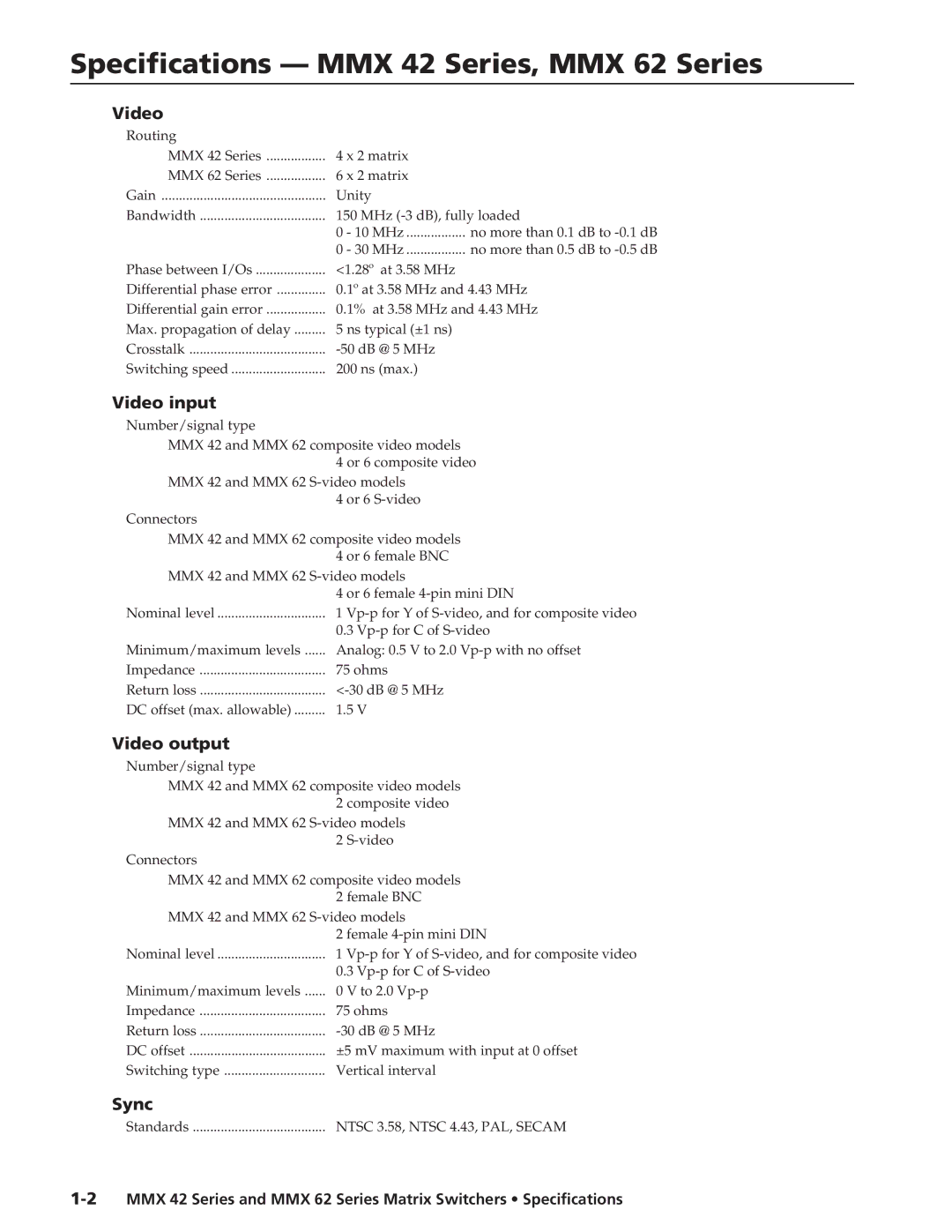MMX 62 Series, MMX 42 Series specifications
Extron Electronics is a recognized leader in the field of audiovisual systems integration, providing innovative solutions for various applications across education, corporate, and government sectors. Among their diverse product offerings, the MMX 62 and MMX 42 Series of multimedia switches stand out for their versatility, user-friendly design, and high-performance capabilities.The MMX 62 Series is equipped to handle up to six video and audio sources, allowing users to seamlessly switch between multiple devices. This series supports various formats, including HDMI, VGA, and composite video, making it suitable for both legacy systems and modern AV setups. A notable feature of the MMX 62 is its built-in scaling technology, which ensures optimal signal integrity and resolution compatibility across different display devices.
On the other hand, the MMX 42 Series is designed for smaller, more compact environments, providing four input connections. This series mirrors the versatility of the MMX 62, supporting multiple input formats while delivering reliable switching performance. It is particularly well-suited for conference rooms and classrooms where space is limited, without compromising on functionality.
Both series are enhanced with Extron's superior EDID Management, allowing for improved communication between the source devices and displays. This feature helps to prevent compatibility issues and ensures that sources can deliver the best possible video quality.
Another standout characteristic is the audio integration capability, where both series support embedding and de-embedding of audio signals. This is particularly useful in environments where audio fidelity is paramount, allowing for clear audio playback through external speakers or sound systems.
In terms of control, the MMX 62 and MMX 42 Series come with various control options, including front panel controls, RS-232, and IP control, providing flexibility in operation and integration with existing systems.
Moreover, both series feature Extron's signature quality assurance and reliability, ensuring that they can withstand the demands of daily use in professional settings. Overall, the MMX 62 and MMX 42 Series represent a robust solution for managing AV signals in an increasingly diverse multimedia landscape.
